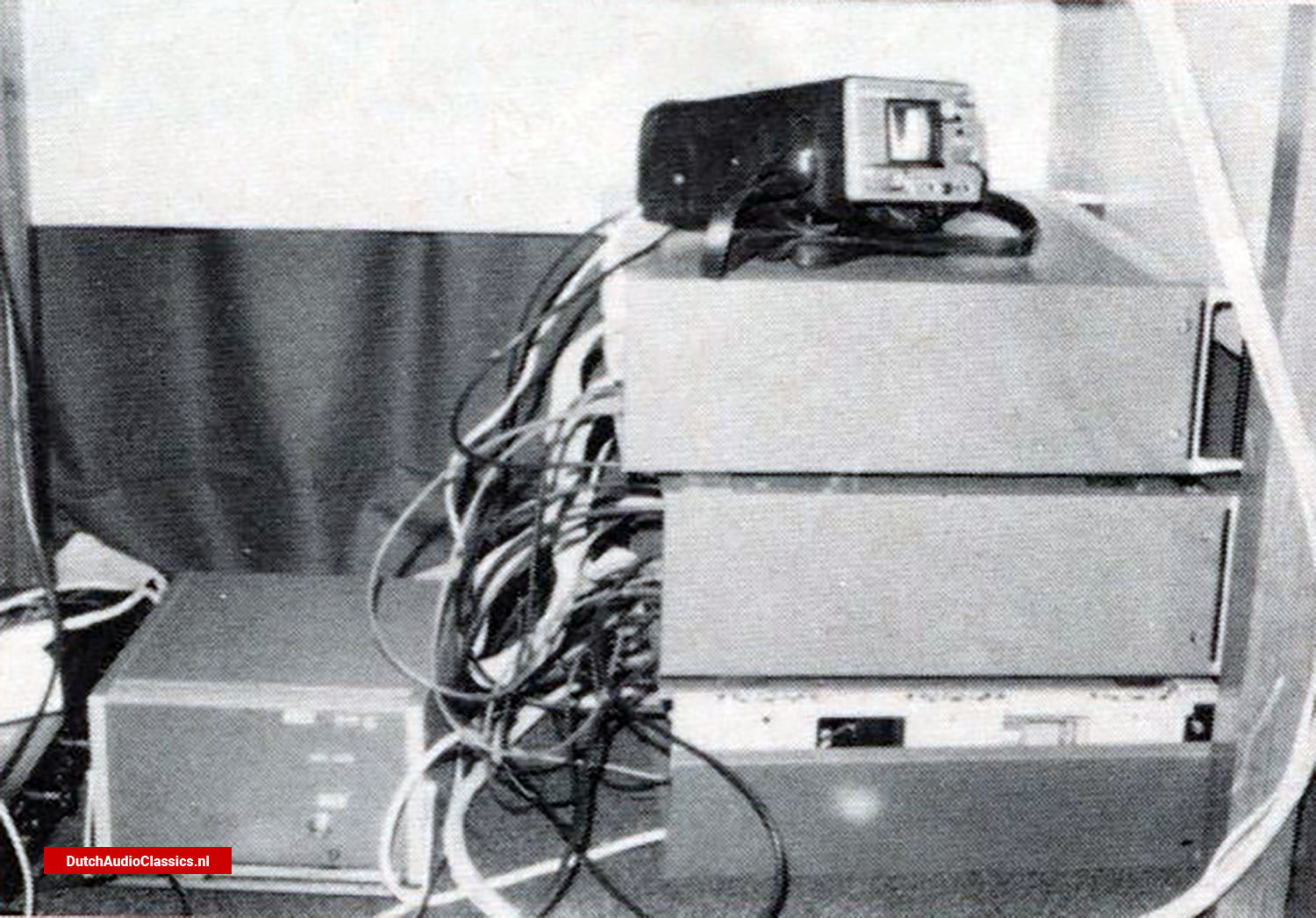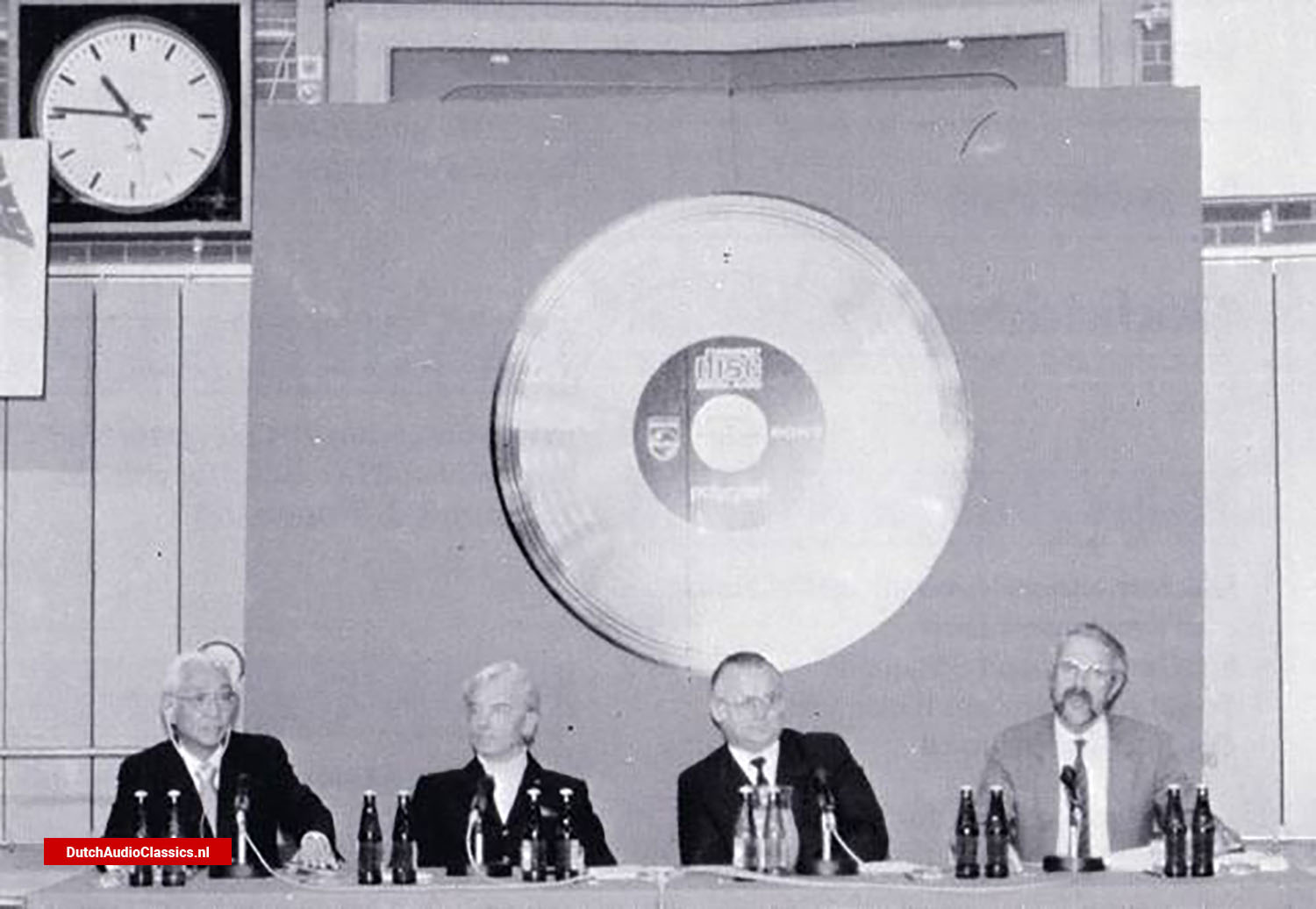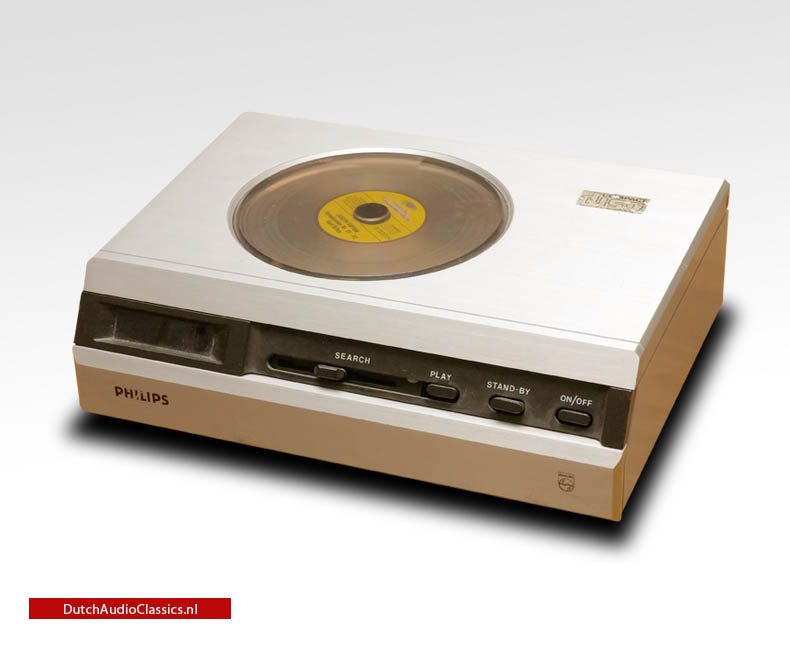The first CD player was to be named 'Pinkeltje', after a well-known friendly gnome from a Dutch children's story. Small and compact, that was the development aim. It had to be a product that was appealing to the eye, easy to operate and smaller than a record player.
Philips Pinkeltje cubic meter electronics
Cubic meter of electronics
This was achieved in record time. The demonstration for the Philips board in the autumn of 1978 made a good impression. The table next to the player held a cubic meter of electronics, hidden from sight by a black cloth. A few cables were used to connect the mechanics of the player to the extensive signal processing. The engineers would incorporate this into the little gnome at a later stage. Although everyone knew what was under the cloth, they believed in the new sound.
 The demonstration CD player at the unveiling was a working machine that met most of the specifications, but it was hand built. Under the table, covered with a white sheet, was a huge digital signal processor circuit on a rack.
The demonstration CD player at the unveiling was a working machine that met most of the specifications, but it was hand built. Under the table, covered with a white sheet, was a huge digital signal processor circuit on a rack.
Human power fan
On April 1981, a demonstration CD player was unveiled, called Pinkeltje. The venue was a presentation in Salzburg, Austria, where Karajan lived. Karajan, who in Morita’s home three years earlier had first been angered by the secret recording, then delighted by the sound quality, wrote in a letter that “when it is finally possible to have a CD demo, I am ready to invite the members of the recording industry, journalists and music aficionados from around the world to a trial exhibition”. On that basis, a presentation was held, hosted by Philips, Sony and of course Karajan. The maestro himself pressed the button on the player. In that moment, the magnificent sound of CD digital audio was officially released to the world. It was introduced to the eager crowd present as “a gift to music lovers”. The members of the Berlin Philharmonic present were played a recording of themselves on CD. They were all thrilled and agreed they had never heard their own performance sound so beautifully as it did on the CD. Nakajima recollects that even the maestro admitted, “There’s nothing better than this.”
 Presenting the Compact Disc in Salzburg (from left to right): Akio Morita (Sony), Herbert von Karajan, Ch. van Tilburg (Philips) and Richard Busch (Polygram)
Presenting the Compact Disc in Salzburg (from left to right): Akio Morita (Sony), Herbert von Karajan, Ch. van Tilburg (Philips) and Richard Busch (Polygram)
Generating heat
However, although things had come this far, the unveiling party was still one of cold sweat and close calls. The demonstration CD player at the unveiling was a working machine that met most of the specifications, but it was hand built. Under the table, covered with a white sheet, was a huge digital signal processor circuit on a rack. They had not been able to use LSI integration, so there were several thousand integrated circuits, memory circuits, resistors and capacitors arranged on circuit boards. These circuit boards generated an incredible amount of heat. This was no problem in a well ventilated area, but not covered up under a table for a lengthy demonstration. As the temperature rose, so did the risk of phase lock loop (PLL) occurring and the entire machine shutting down.
 A prototype Compact Disc player with a 11.5cm Compact Disc
A prototype Compact Disc player with a 11.5cm Compact Disc
Small build Sony engineer
Initially, the team tested an electric fan, but there was a risk that electromagnetic interference from the fan motor would cause major trouble with the large-scale electronic circuits. Concluding that there would be no solution without sacrifice, the team decided on a “human-powered fan”, using a hand fan to cool the circuits. However, the difficulty was how to hide somebody under the table during the demonstration to keep fanning the circuits. By chance, Sony had sent an engineer who was of a small build. He took on this important mission and spent a full hour under the table fanning the circuits for the demonstration. Although it was the engineer that was drenched in sweat, Nakajima could not help breaking out in a cold sweat himself. The unveiling was a true balancing act, but, like a baby’s first cry, the CD had now been heard. After Salzburg, major events were held at the Hilton Hotel in New York and the Palace Hotel in Japan. Ultimately, the “cold sweat” demonstration ended in success
Joop Sinjou
Joop Sinjou started working for Philips in 1952 and throughout his career he worked on the development of audio-video products such as radiogrammofoons, portabels, phono-equipment, video long play disc and the compact disc. He was the leader of the project which developed the CD for Philips in close cooperation with Sony. After the first CD player was produced in 1983, he spent several years working in Hong Kong, China, for joint-ventures related to audio-video products.
Philips Pinkeltje
Below some photos of the very first Philips prototype cdplayer, 'Pinkeltje', which Philips showed the world in March 1979. The name Pinkeltje originates from a character in the children books series by the Dutch author Dick Laan.
The photos were provided by Hans Mons, Joop Sinjou and Mr. G.Vos (many many thanks!).








